Bryan Pearson's Blog, page 33
August 28, 2014
August 28: Loyalty Links & Likes
 Big Data’s Two-Way Customer Conundrum – Forbes
Big Data’s Two-Way Customer Conundrum – Forbes
Big data’s potential to increase profit is definitely a big advantage, but as this writer points out, approaching it as a customer-committed imperative rather than a money-making one, companies can actually benefit the customer.
Infographic: Top 15 Customer Experience Priorities – Castleford
This infographic details the results of a survey of Australian and U.S. businesses, which we’re asked to identify their top customer experience priorities.
Franshising Loyalty: How Papa John’s, Moe’s Southwest Grill and Wild Birds Unlimited Take Loyalty Local – COLLOQUY
This story explores, with three major brand examples, how corporate-run loyalty programs can be effectively adopted by franchisees.
Relationships Are the New Currency – U.S. News & World Report
An interview with social media guru Ted Rubin on the relationship economy. As Rubin, in his book Return on Relationship, puts it: The return on the customer relationship is the value accrued by a person or brand due to nurturing a relationship. ROI, meanwhile, is dollars and cents.
Digital Marketers Beef Up On Personalization – Media Post
A new study from Salesforce and Forrester reports that marketers face challenges in personalizing customer interactions and analyzing customer data. This leads experts to predict that marketers will start spending more to optimize these important tools.
August 25, 2014
Loyal Customers: A Company’s Red-Blooded Dividends
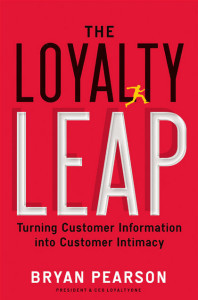 The following blog item is an edited excerpt from my book, The Loyalty Leap.
The following blog item is an edited excerpt from my book, The Loyalty Leap.
It is a business practice so long-standing it is practically a cliché. Companies fall all over themselves to woo new customers, but once they get them, they have no idea how to make them profitable.
Sure, a customer can be acquired, but how do companies ensure that investment yields a return? All that work should guarantee some form of long-term dividends, and not only when there is a quarterly blowout sale.
Many marketers aspire to creating relationships between their company and customers that are like those of good neighbors, but the bottom line has to factor in somewhere. Every profitable company keeps an eye on business results, and that should include customer management and lifetime value, as that really connects with the mission of chief financial officer.
Yet customer equity is rarely considered in corporate financial analyses, and there are no established accounting standards for customer management. This may change as loyalty and data-driven marketing become increasingly prevalent, but marketers have a long way to go in this area of measurement. There are some reference points, however.
Customer experience experts Don Peppers and Martha Rogers, for example, established a measure called the Return on Customer, which comes down to a simple equation: “The sum of lifetime values of customers at the end of a period, plus profits delivered during the period, divided by the sum of lifetime values of customers at the beginning of the period.”
There is also Fred Reichheld’s Net Promoter Score (NPS) on the likelihood of customer recommendations. However, while NPS is a great tool, there is the one drawback that it does not focus on risk. And the risk of loss is great. In his book The Loyalty Effect, Reichheld reports half of the customers of most companies change over in five years. Half! That is a staggering loss on an asset that was expensive to acquire in the first place.
So ask: How happy would shareholders be if the cost of customer acquisition was not paying a dividend? Companies routinely fund capital investments in technologies that are amortized over a number of years. It makes sense that investments in the customer asset should be measured as well. The efforts a company makes to meaningfully connect with customers and create enduring, value-based relationships has a direct bearing on the bottom line.
The notion of customer lifetime value and relationship building is neither too lofty nor imprecise for shareholders to rally behind. The short-term profitability of the greatest companies is dependent upon the long-term value of their most valuable assets: their customers. These companies measure a customer’s worth not by a few transactions but over her lifetime, by multiplying the annual sales she is expected to generate by the number of years she is projected to shop with the company.
Once the value equation is fine-tuned so future profits can be correlated with a customer’s predicted lifetime spending, then customer relationships can be proven to contribute to company growth.
August 20, 2014
August 20: Loyalty Links & Likes
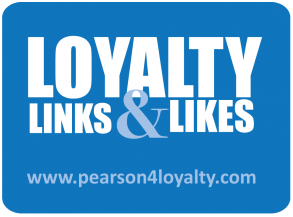 The Keys To Exceptional Customer Experience From Visionary CMO’s of Travel – Forbes
The Keys To Exceptional Customer Experience From Visionary CMO’s of Travel – Forbes
Three travel industry executives share their thoughts on using customer strategy to create loyalty, engaging the Millennial Generation, utilizing data, and preparing for the future.
Marketers: Ditch The Plastic Loyalty Cards – Marketing Land
Marketers need to win the battle when consumers choose between purchasing online and buying in-store, but brand offerings must be accessible to their core audience at all times across multiple touch points and devices.
Reuniting: How JetBlue, Fifth Third Bank, Hertz and others Re-Engage Lapsed Loyalty Members – COLLOQUY
A brand has less than a 50% chance of retaining a new loyalty member once he or she enrolls with the program. This article shares some tips on how to re-engage from major players across industries.
Seven Game-Changing Marketing Trends to Engage Customers, Build Your Brand – Business 2 Community
This article details seven game-changing trends which address key customer needs and expectations you need to consider as you reevaluate your marketing strategies.
Embracing Big Data, Technology and Omni-Channel Operations to Enhance the Customer Experience – Retail Customer Experience
The way a retailer embraces the roles of big data and technology, and their ability to create an omni-channel platform, may determine whether they will ultimately succeed or fail.
August 18, 2014
Tossing Loyalty a Bone, or a Rolling Stone

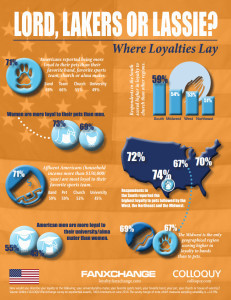 Ask anyone to name the first concert he or she attended, and you will be in store for a lush tale, one complete with a well-planned wardrobe, the stage engineering, the opening chords and the multiple encores.
Ask anyone to name the first concert he or she attended, and you will be in store for a lush tale, one complete with a well-planned wardrobe, the stage engineering, the opening chords and the multiple encores.
The concert may have taken place decades ago, but it remains a living experience, tattooed on the brain as fresh as the morning’s alarm bell. And it is at the heart of what makes us loyal. The same logic applies to our first pets. Ask a co-worker about his or her favorite pet, and watch the facial expression soften into a collage of recollections.
So it did not surprise me when I read the results of a recent survey by COLLOQUY and FanXchange, a provider of live event tickets for loyalty operators. The survey, called the 2014 Experiential Rewards Research, sought to learn if people are more loyal to their favorite bands, pets, sports teams, churches or alma maters.
Based on the results, American and Canadians rank pets and bands first, respectively. Specifically, 71% of Americans surveyed said they are extremely or somewhat loyal to their pets, with loyalty to their favorite bands ranking second, at 69%. Most Canadians, meanwhile, said they were most loyal to their favorite bands (73%), with loyalty to their pets ranking a close second at 72%.
I guess one can argue, then, that Rush edges out Rover in Canada, but in the states, Roscoe beats out the Rolling Stones.
In both countries, sports came in third, with 66% of Americans and 65% Canadians pledging their loyalties to a favorite sports team. Coming up the back, in America, are churches (55%) and alma maters (49%). In Canada it was reverse, with 46% most loyal to their alma maters and 41% loyal to their churches.
The study findings are based on a June survey of 1,003 American and 1,005 Canadian consumers.
The research may be a little tongue-in-cheek, but not the results. The lesson marketers should take from the importance of Wilco and Whiskers is that consumers tend to remember those with which they personally connect. Bands deliver messages that personally resonate; pets are unconditionally loyal. We relate to each on an intimate level.
As Jeff Berry, research director of COLLOQUY, described these affinities: “There was a connection. Somebody finally understood us, and that made a lasting impression.”
So the question, or challenge, for marketers, is this: When your best customers leave, do they do so with a positive imprint of the brand experience in their memories? Did the interaction convey the organization’s mission; the mission that brings customers back?
Ask anyone to describe his or her favorite brand experience, and take note of the detail in the response. It may not be a lush tale, but it likely will include a specific person who made a connection. Ask for a bad experience, and it will likely involve a person who failed to show up.
But let’s leave pet peeves for another story.
August 13, 2014
August 13: Loyalty Links & Likes
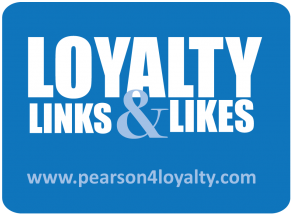 The Customer Journey & Relevant Experiences are the New Business Imperatives – Econsultancy
The Customer Journey & Relevant Experiences are the New Business Imperatives – Econsultancy
Today’s marketers are presented with a unique challenge: the need to deliver customers experiences that are coordinated across all channels, with personalized, relevant messaging and content.
Four Loyalty Lessons Marketers Can Learn From Brett Favre – Direct Marketing News
The former Green Bay Packers quarterback’s journey exemplifies what it takes for brands to win—and lose—fans. These four loyalty lessons help marketers tackle key brand challenges.
Lucking Out with Loyalty: State Lotteries Try to Keep up With the Competition – COLLOQUY
Loyalty programs are taking lotteries in a new direction as they focus more on fun than strictly winning or losing.
Customer Loyalty Programs Turn Shameless Amid Intense Competition – Huffington Post Canada
Competition for consumer dollars is becoming fierce and companies are pulling out all the stops to build loyalty, but marketers need to step back and realize that these tactics won’t work unless the product or service they’re plugging is of good quality.
Retailers Are Transforming Marketing and Brands Must Adapt – Ad Age
Recent moves by retail giants Walmart and Amazon.com confirm that the marketing landscape is evolving. To meet this challenge, brands need to focus on relevant, personalized connections with every shopper to foster brand loyalty.
August 11, 2014
Walmart Web Work Leaves Much In Store
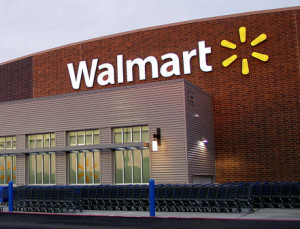 Walmart created some buzz recently when it announced plans to personalize its online shopping experience, but the news failed to address the white elephant that is Walmart’s cornerstone – those big white stores, all 1.1 billion square feet of them.
Walmart created some buzz recently when it announced plans to personalize its online shopping experience, but the news failed to address the white elephant that is Walmart’s cornerstone – those big white stores, all 1.1 billion square feet of them.
The low-priced retailer, the largest merchant in the world with sales of more than $476 billion, in early August detailed plans to customize its online experience. In particular, Walmart will draw on previous consumer purchase behaviors to show shoppers other products they might want to buy. Kind of how Amazon.com has been marketing to its shoppers for years.
However, there is a key difference between Walmart and Amazon, and that is the dot-com part. Walmart is a multi-channel merchant, with scads of behavioral residue clinging to its shelves. If it leverages only its online consumer data, and ignores those residual in-store insights, it’s operating with a sizable consumer blind spot because, let’s face it, most consumers shop in multiple ways.
I am not implying that Walmart’s online endeavor is a poor investment. Its limited focus on online behavior presents opportunities for learning how consumers interact through a critical channel – especially when competing with the likes of Amazon.com – but is incomplete data worth the risk?
Perhaps Walmart is able to connect information from its stores to its customers, and if so that would help it enhance the relevance of its messaging. However, even with its extensive data mining capabilities, I am not sure it can connect the dots that effectively. Walmart lacks the kind of data that it would gather through a loyalty program and the unique identifiers one affords. Granted, it is testing the waters of loyalty in different ways, such as with its Savings Catcher price-comparison app, but without a loyalty platform that touches consumers regardless of how they shop, there’s a limited chance these efforts will reach full potential.
Retailers that want to create a personalized experience have to consider ways to connect customer activity across channels and then design the customer experience to maximize the relevance factor. In doing so, they could turn any white elephant into a cash cow.
August 6, 2014
August 6: Loyalty Links & Likes
 1. The Value of Customer Experience, Quantified – Harvard Business Review
1. The Value of Customer Experience, Quantified – Harvard Business Review
For business executives, the value of delivering a good customer experience is often not clear, because it can be hard to quantify. This blog post explores ways of quantifying the impact of good versus poor customer experiences.
2. How to Decide Which Loyalty Program is Best – Toronto Star
A review of Canadian loyalty programs and which deliver the best bang for their buck.
3. Lord, Lakers or Lassie? Where Loyalties Lay – COLLOQUY
A joint study by COLLOQUY and FanXchange reveals that American consumers are more loyal to their pets than their churches, favorite sports teams or alma maters.
4. Data Collection Methods to Boost Your Marketing Intelligence – Business 2 Community
Business intelligence is enhanced while marketing strategies are optimized with the help of the data collection process. This article details a variety of ways by which internet marketers are able to gather this valuable data.
5. You Can’t Eat Buzz: How to Create Profitable, Loyal Customers – Forbes
Buzz is a magical force, but it only gets a business so far. What businesses need is staying power, a customer experience that builds customer loyalty and gives customers a desire to return.
August 4, 2014
Loyalty Limelight: My Lotto Rewards
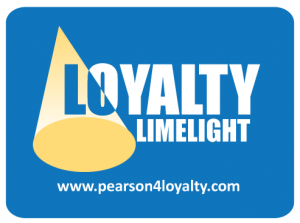 The initiative: The Ohio Lottery’s My Lotto Rewards
The initiative: The Ohio Lottery’s My Lotto Rewards
In a nutshell: The Ohio Lottery is celebrating its 40th anniversary with the launch of a loyalty program, joining several other states – not to mention casinos – in offering consumers a chance to win points along with their jackpots. The program, My Lotto Rewards, is scheduled to launch Aug. 27. It joins at least a half-dozen other state lottery programs, including Michigan Lottery’s Player’s Club as well as programs in Kentucky, Arkansas, Missouri, North Carolina, Kentucky and Tennessee, according to a story in the Cleveland Plain Dealer. The Ohio Lottery, which sold its first games in August 1974, is the ninth-largest lottery program in the United States, offering instant and online games at 8,800 merchants.
Features: Customers can register for My Lotto Rewards online and earn points at registration, for purchases of both online and instant tickets, and on special events such as birthdays. Customers can redeem their points for prizes, sweepstakes entries, instant win games and other rewards including lottery-branded merchandise and personal electronics. In time, the Ohio Lottery hopes to offer gifts cards and possibly tickets to sporting events. The Ohio Lottery has set aside $3 million to bankroll reward prizes in its first year, according to the Plain Dealer coverage. It has earmarked a reported $700,000 to build and launch the program, which will include a mobile app.
The Takeaways: Lottery loyalty is an interesting, but challenging, proposition. At first blush, a marketer might not think lottery ticket buyers need an incentive other than the chance to win a large windfall. But there are lots of other options vying for those lottery dollars today, notably the casinos that have been spreading across the state of Ohio and the country. The incentives offered by My Lotto Rewards appear to be designed to keep consumers, particularly next-generation consumers, from straying to those other gambling sites. As such, the program’s operators will need to gain an up-close understanding of their customers across the state’s 88 counties. In that respect, the Ohio Lottery has some advantages:
• The lottery already manages a large online database of customers, according to the Plain Dealer story. The Ohio Lottery reported that as of August 2013, 135,000 people had signed up to participate in its contests and events. In addition, it said it attracts about 3,000 new users a month.
• About 30,000 people registered for e-mail messages from the Ohio Lottery and 4.3 million receive text messages. The loyalty program, with its app, should help to increase those numbers and enrich the data pool.
• Having relationships with almost 9,000 retailers, Ohio Lottery has the potential to create merchant partnerships, particularly with statewide chains that have the scale to align on the awards portfolio (points toward fuel, for example).
• Similarly, if the lottery forms partnerships with major sports teams, as it hopes to, it can gain added insights into consumer behavior in other areas, such as the concession stand. This knowledge can be used to create more tailored reward options to specific consumers. (“Congratulations! You’ve earned two hot dogs and a large soft drink at Progressive Field.”) In this way, The Ohio Lottery would be borrowing from the playbook of Caesars Entertainment, which launched its Total Rewards program as a way to track its gambling customers, but soon identified value opportunities among non-gamblers.
For the consumer, My Lotto Rewards offers some compensation when the big jackpot does not come through, since members will still be earning points toward future prizes. This sense of “cash back” offsets the investment in tickets and is well aligned with the aspirational quality of a sweepstakes game, at least for hard-core lottery players.
For those who are occasional players, the rewards will need to come fairly easily and with some regularity. They do not have to be big rewards – a free ticket for every 10 purchases might do it. It just has to be enough to keep the buyer motivated. I’d think a gamification feature, one that rewarded for social media interactions and word-of-mouth, would be a natural progression.
July 31, 2014
July 31: Loyalty Links & Likes
 Bringing Customer Loyalty Programs to Local Merchants – Forbes
Bringing Customer Loyalty Programs to Local Merchants – Forbes
This article details the journey of Silicon Valley startup FiveStars and the hurdles it has had to overcome bringing loyalty to local merchants.
Measure the ROI of Customer Loyalty Marketing With These 5 Key Metrics – Business 2 Community
When embarking on customer loyalty marketing, the objectives you set and the measurement tools you put in place are key to your success. This article details five key metrics to measure the ROI of a customer loyalty program.
Fare Game: What Marketers Can Learn From Frequent Flyer Program Changes – COLLOQUY
When it comes to testing customer loyalty, pending changes to frequent flyer reward programs could be the toughest test of the airline industry’s ability to get lift.
6 Secrets for Creating Fierce Employee and Customer Loyalty – Entrepreneur
If employees have deep functional expertise in the business, develop relationships with customers and convey a positive attitude about the company, shoppers will keep coming back.
How Digital Methods Can Improve Loyalty – Marketing Week UK
This article challenges marketing professor Byron Sharp’s theory that reach, not loyalty, is the key to brand success with the argument that digital channels have the ability to nudge existing consumers to buy more.
July 28, 2014
Chip Conley, Maslow and the Psychology of Loyalty Marketing
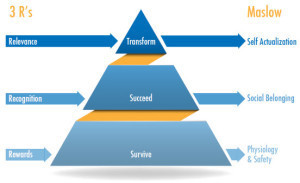 A number of weeks ago I had the opportunity to attend the World of Business Innovation summit in New York. The quality of speakers was outstanding, but there was one presenter who really stood out for me.
A number of weeks ago I had the opportunity to attend the World of Business Innovation summit in New York. The quality of speakers was outstanding, but there was one presenter who really stood out for me.
Chip Conley, founder of Joie de Vivre hotels, shared a bit of his history and specifically how he developed the concepts for the various properties in what became one of the most successful boutique hotel chains.
As with many entrepreneurial stories, Chip rode the waves of early success as Silicon Valley went through the first dot-com boom; but it was in the downturn following the bust that he came to gain a deeper understanding of how to approach his business. It was this insight that caused me to step back and reflect on some key concepts from my book, “The Loyalty Leap.”
What Chip began to explore was core motivation theory and specifically the work of psychologist Abraham Maslow, what was commonly known as Maslow’s hierarchy. Chip boiled down the various levels in the theory to three broad categories that describe the journey we go through as human beings.
The first level speaks to our innate need to survive – the need to make sure that we are safe and tend to our physiological needs. The next level is a measure of how we are succeeding and is characterized by how we fit within our social groups, how we belong and the esteem we earn from our achievements. And finally, as we satisfy these demands, we approach the pinnacle of Maslow’s hierarchy – the point where we self-actualize and begin to shape and transform the world in which we live.
Chip’s insight was that this model could be applied to employees, customers and shareholders, not just the individual. If we thought about how a self-actualized relationship was developed in each instance, we could imagine the potential, for example, in how an employee would approach fulfilling the brand promise to the customer.
That got me to thinking. In loyalty programs I often talk about the three “R’s” of loyalty. The first “R,” rewards, refers to the tangible exchange of value between the program operator and the customer. The second “R” relates to recognition and the way a brand differentially treats its customers based on their value to the business. And finally, once the organization starts to leverage the customer information obtained from the program, it works on building a more relevant experience for the customer, often one that reflects personalized customer understanding. It is this third “R,” relevance, that helps the customer become emotionally loyal to a business or brand.
Reflecting on my three R’s, I realized that they mapped neatly with the simplified version of Maslow’s hierarchy that Chip had used for his presentation. The reward exchange, like Maslow’s first level, reflects the transactional loyalty that helps deliver upon customer expectation of fair price or value. In that way, it simply reinforces the ability of consumers to stretch their dollars while motivating them to achieve the full potential of gains available from this kind of program.
Recognition mapped neatly with the second level, where the organization establishes an understanding of where it stands relative to its peers or other shoppers. Achieving platinum status, for instance, gives the consumer a sense of accomplishment and can often create renewed commitment from the customer to the brand.
Finally, when working to deliver a relevant experience, we are actually aiming to fulfill the underlying needs – maybe even unrecognized needs – of the customer. It is this sense of shared purpose between a company and its customer that moves it to a point of a self-actualized experience; something that transforms the way the consumer sees the brand. Ultimately, it is this sense of shared purpose and experience that often inspires customers enough to become evangelists for the brand.
Imagine that. Psychology 101 meets loyalty marketing. Not that these two are that far apart given the connection to motivation theory, but it is amazing to me that more brands are not striving to use their customer information to build the kind of relevant experiences that could genuinely result in the type of spontaneous, emotional energy that ultimately defines a great brand experience.
Bryan Pearson's Blog
- Bryan Pearson's profile
- 4 followers



